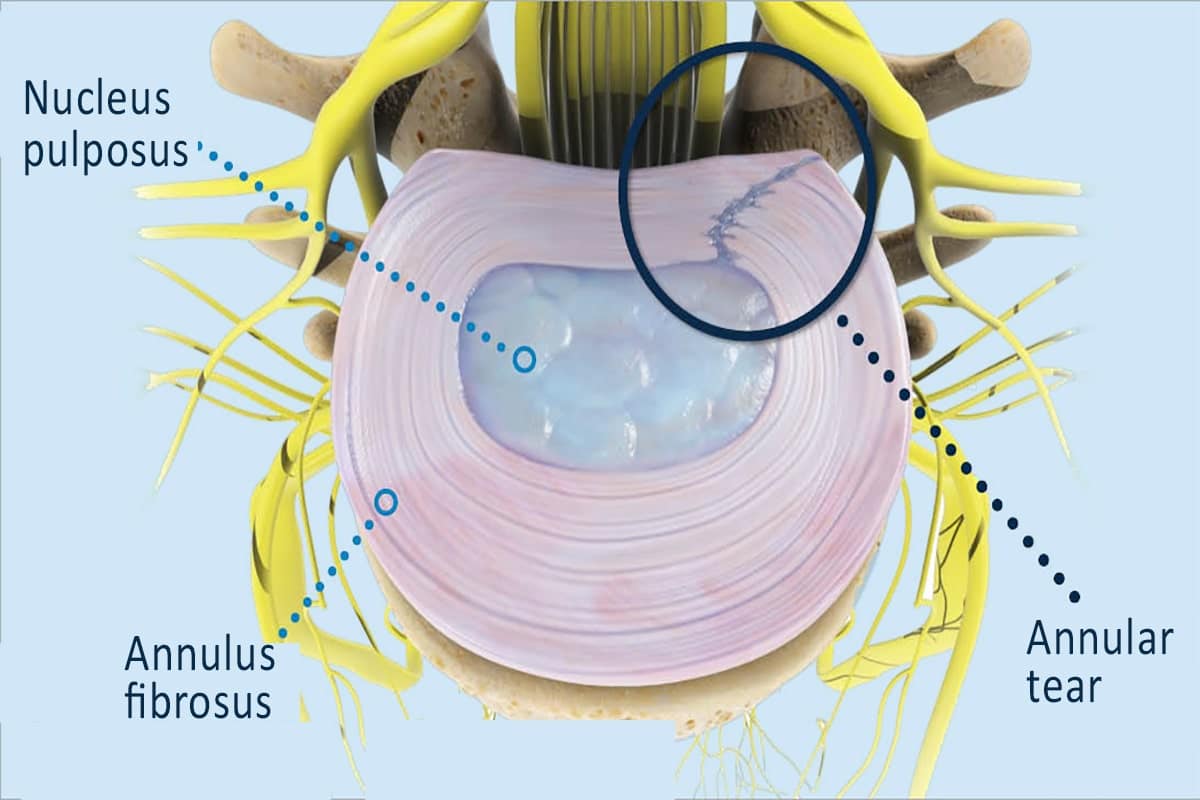An annular tear occurs when a disc between the spinal vertebrae rips or tears. This condition can cause pain in the disc, as well as radiating weakness, numbness and discomfort. Patients who are considering annular tear surgery have usually tried a range of nonsurgical treatment options to address their symptoms, such as anti-inflammatories, physical therapy and steroid injections.
To learn more about annular tear including symptoms, causes, and how it is diagnosed, visit our Annular Tear information page.
How annular tear surgery helps?
In many cases, patients who choose to have annular tear surgery actually have ruptured discs. Annular tears don’t always cause severe symptoms by themselves beyond localized pain, but tears can worsen, allowing the inner gel-like center of a disc to leak into the spinal canal. That gel can inflame tissues and place pressure on the spinal cord or a nearby nerve root, causing any number of problems along the affected nerve’s pathway.
Annular tear surgery often involves alleviating pressure or decompressing trapped nerves. This goal can be met by removing part or all of an affected disc. Cases that involve total removal of a disc may also include the placement of an artificial disc or a spinal fusion procedure as a way of stabilizing the spinal column.
Annular tear surgical options
Although the general goal of annular tear surgery remains largely the same no matter the specific approach, patients should understand that there are two main types of surgery available — traditional open spine surgery and minimally invasive surgery. Although a minimally invasive approach is often safer and an effective alternative, not all patients are proper candidates. Some benefits of a minimally invasive annular tear procedure include:
- Smaller incisions
- Shorter recovery times
- Performed on an outpatient basis
- Reduced risk of complications and infections
If you have been diagnosed with annular tear, contact our specialists at Spine & Orthopedic Center at 888-409-8006.







Leave A Comment